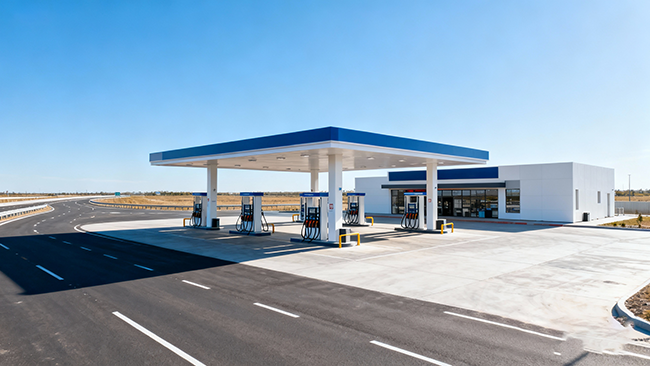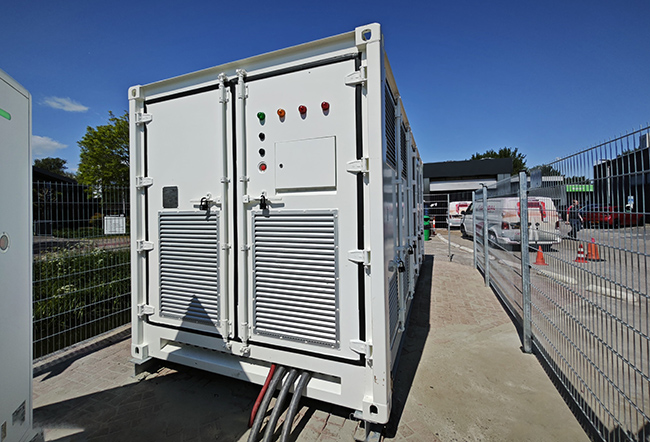Background: Energy Security Becomes Key to Gas Station Operations
Against the backdrop of Europe’s energy structure transformation and increasing grid pressure, public service facilities such as gas stations are facing ever-growing demands for a stable power supply. The normal operation of a gas station relies not only on fuel pumps but also on several critical components, including lighting, monitoring, security alarm systems, and payment networks. Power outages or grid fluctuations can lead to service disruptions, equipment damage, and even safety hazards.
To improve energy security and economic efficiency, a European gas station partnered with SCU to deploy a high-performance energy storage system, creating a green energy solution integrating uninterrupted power supply, peak shaving, and intelligent energy management.

Customer Needs: An Energy Solution Balancing Safety, Stability, and Profitability
This gas station is located at a major European transportation hub and its daily operations are highly dependent on a stable power supply. However, the instability of the local power grid presents customers with the following challenges during operation:
- Power supply instability risk: Occasional grid fluctuations or power outages affect operational continuity.
- Energy cost pressure: High electricity prices during peak hours lead to continuously rising operating costs.
- Green transition needs: Desire to improve energy efficiency and reduce carbon emissions;
- Revenue diversification goals: Exploring the possibility of profiting from energy storage systems participating in the electricity market while ensuring power supply.

Solution: High-Performance Energy Storage System
SCU provides customers with a 20ft containerized energy storage system, integrating highly safe lithium iron phosphate (LFP) batteries, an intelligent energy management system (EMS), and a high-efficiency bidirectional converter (PCS). This system features high cycle life, excellent stability, and superior environmental adaptability, ensuring high efficiency and reliability during long-term operation.
- When the power grid is supplying power normally, the energy storage system intelligently dispatches electricity through peak-shaving and valley-filling strategies, reducing peak-hour electricity costs and improving energy utilization efficiency.
- When a power grid fault or outage occurs, the system can automatically switch to backup power mode within milliseconds, providing uninterrupted power to critical loads at the gas station, such as fuel pumps, lighting, security monitoring, and billing systems. This ensures operational safety and continuity, achieving a dual guarantee of energy cost optimization and power supply security.
Project Achievements: A win-win situation of safety, stability, and economic benefits
- Significantly Improved Power Supply Continuity: The energy storage system automatically takes over the power supply the moment a power outage occurs, ensuring the normal operation of fuel pumps, lighting, and security systems, improving the safety level and service reliability of the gas station.
- Significantly Reduced Electricity Costs: The system utilizes off-peak hours for charging and peak hours for discharging, achieving peak-valley electricity price arbitrage and bringing continuous operating cost savings to customers.
- Creating Additional Revenue and Green Value: The energy storage system can participate in grid frequency regulation or energy trading, bringing additional revenue to customers. Simultaneously, by optimizing the energy structure, it reduces carbon emissions, contributing to the green transformation of gas stations.

Customer Said
“SCU’s energy storage system makes our gas stations safer and more efficient. Even during power outages, we can keep critical equipment running. The system’s intelligent control allows us to achieve real savings and benefits in energy management. This is an investment for the future.”
Outlook
SCU will continue to dedicate itself to providing advanced energy management and storage solutions for commercial and industrial users worldwide, helping energy infrastructure move from “passive electricity consumption” to “active management,” providing reliable and green energy security for critical scenarios such as gas stations, factories, and data centers.
